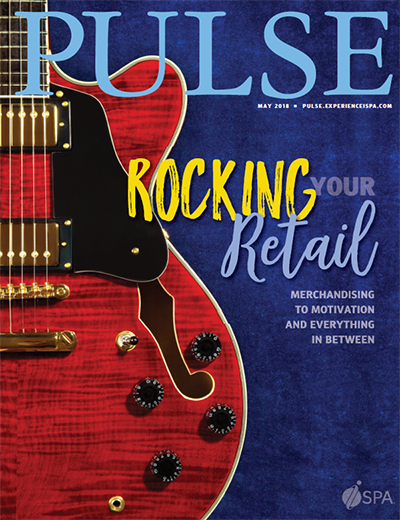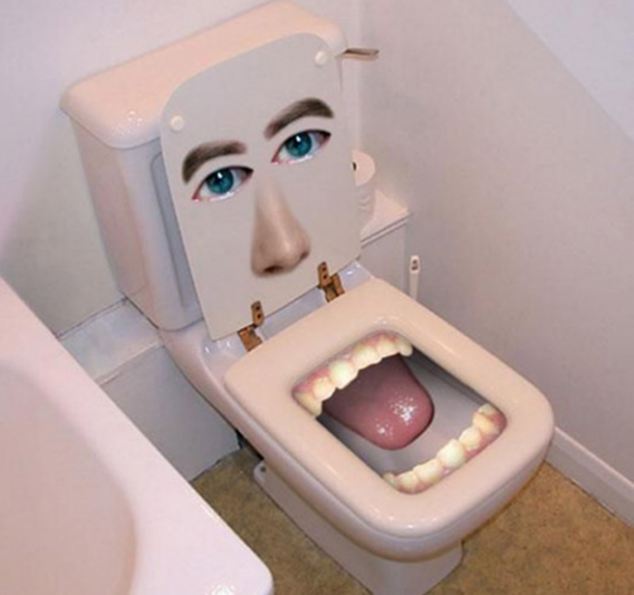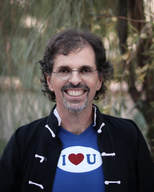|
Remember the song, "He's got the whole world in his hands?" Well, we have an entire universe in our minds. Don't believe me? Then please answer this question for me: Is there anywhere in the universe where your imagination cannot take you? Even the most skeptical cynic I know has admitted that the answer is: NO. In other words, nothing in this world is beyond the reach of our minds through the power of imagination.
Nearly a century ago, quantum physicists showed us that there is no point searching for an "objective reality" separate from our perspective of it. One of the pioneers in this field, Erwin Schrodinger, said, "The world is given to me only once, not one existing and one perceived." Do you realize the significance of this statement? It means that ALL reality is subjective. The only universe that exists is the one we perceive. Period. If you look for a "hard" reality beyond the one you see, hear, smell, taste, touch, think, feel, and imagine, you simply will not find it. That thing you are seeking does not exist. So, why can we agree on so many things: California is on the West Coast, New York is on the East Coast, and Nebraska is somewhere in the middle. Perhaps this is simply evidence that we are of like mind. Through a combination of factors, including genetics, cultural influences, and our exposure to the same sources of information, our minds have converged on certain "realities." But make no mistake: Those realities are not as hard and fast as we might assume. As the video above explains, science itself has shown that space and time are illusory. This reality we are living in is ours to shape and mold as we please. If enough of us agree on something, we bring it into being. "A dream we dream alone is just a dream," said John Lennon. "A dream we dream together is reality." It's time to re-envision our world. The one we have conceived is in crisis. I just found out, while visiting the beautiful North California coast, that 93% of California's kelp beds are dying. This is a portent of some severe conditions ahead. It means that the Pacific Ocean is dying right before our eyes. Without kelp, thousands of species cannot survive. Abalone that used to be extremely plentiful in these parts is all but gone now. Starfish have died off. These are very hardy animals. We live in a paradise of our own making, but as a species, we have been very careless with it. Let's shift that reality now, while we still can. We clearly have the power!
0 Comments
I just returned from Boulder, Colorado, where I had the pleasure to speak to the local International Association of Near-Death Studies (IANDS) group. Boulder impressed me as a community of influential and insightful thought leaders. The room was filled with artists, group leaders, mystics, and healers.
One of the things I had heard about Boulder prior to my visit is the following joke: Boulder is 13 square miles surrounded by reality. The humor lies in the implication that Boulder is living in a reality other than the one in which everyone else is living. So, people outside of Boulder seem to believe that Boulder makes its own reality. And, coincidentally, the people I met inside of Boulder share that belief! So...is making your own reality a good thing or a bad thing? My answer is that making your own reality is the only thing. One of the themes of this week's featured video is that there is no objective reality. In other words, the "real" reality (on which everyone can agree) does not exist, never did, and never will. This leaves only one reality: the one we make. Deep Creativity recognizes and celebrates this power to make one's reality. Great artists and visionaries have been creating such realities for a long time, and they have taken us on a journey into those realities. After my first-ever visit to Boulder, I came away with the sense that Boulder is not only making its own reality; Boulder knows that it can; and Boulder knows how it's done! I bow to the creative spirit of this community. And I offer my sincere gratitude and AWE for the beautiful, warm welcome I was given by everyone I met. I don't know too many people who are living in that kind of lofty reality, where the spirit of openness and Ubuntu prevails. Now, imagine an entire community doing that together. That's a Boulder reality--and also a bolder one! The May issue of Pulse magazine includes an interview I did with editor Kelly Heitz. Pulse is published by the International Spa Association for spa professionals. One of the goals of the magazine is to provide an in-depth look at current spa trends. Among these trends is growing interest in creativity and inspiration, which is why Deep Creativity is being featured in this month's issue.
Of course, creativity is important to professionals who work in the very competitive spa industry. But it has also become an important factor in attracting guests to spas and resorts throughout the world. Relaxation and luxury are no longer the primary reasons that individuals seek out the spa experience. Professionals in a wide range of industries are realizing that spa retreats can be a critical aid to personal and professional growth. In virtually every industry, profit share depends on the ability to inspire others: customers, personnel, and investors. When it comes to inspiration, here is a basic rule of thumb: You cannot give others something you don't have. In other words, you cannot inspire others if you lack inspiration yourself. That is why inspiration matters to spa guests. They come to spas and resorts to recharge their batteries and press the reset button. The ideas is to gain new perspectives that can help these individuals serve others more effectively. In workshops and play circles like the one I will be offering at Unity of Port Townsend, Washington, on June 10, I teach a simple and fun way to tap into creative inspiration on a consistent basis. The idea is not just to get inspired but to stay there. Living in the space of inspiration is something virtually anyone can do--with the proper training. In Deep Creativity, I identify a set of qualities, called the "Deep Six," that can be developed and nurtured. It's simply a matter of having the right knowledge and habits. One day soon, I anticipate that creative inspiration workshops will be offered at most luxury resorts and spas, as well as on cruise ships. My interview in this month's Pulse is just one sign of this important trend in the spa industry.
In Hero with a Thousand Faces, Joseph Campbell showed that the prototypical hero myth begins when the hero breaks free of the past to set off on a bold adventure. Campbell called this phase of the hero story "departure."
This is the jumping-off point. Heroes distinguish themselves from everyone else by heeding the call to adventure and jumping in with both feet. They choose to sacrifice safety, security, and stability in pursuit of the ultimate reward. For me, that reward is inspiration. This is not simply about being creative. Inspiration holds the key to passion, fulfillment, unconditional love, and spiritual awakening. And the point of departure lies in the answer to this very simple question: How many sources of creativity are there in the universe? You may doubt that one question can make such a difference. But it does! When you watch the video above, you will understand why that is.
The scientific community has admitted that it does not have a handle on the process of artistic creativity. A 2010 review of scholarly publications on creativity by two esteemed researchers made zero mention of that process. Shocking, right? But absolutely true (I cite and discuss that review article in the Introduction to Deep Creativity).
Why have creativity researchers devoted so little attention to the creative process, let alone the experience of creative inspiration? One reason is that the process is not a rational one. As I have said many times, creativity is not just thinking outside the box but living outside it. The creative process is a bold adventure filled with passion, turmoil, sacrifice, joy, inspiration, self-transcendence, and unconditional love. These qualities are too complex and messy to be studied in a standard controlled experiment with a random group of research subjects. To understand this process, we have to redefine the very notion of creativity. Current definitions, which focus on the product, are irrelevant to the artist immersed in the act of creating. As you can see from the video above, I have chosen to define the creative process in terms of two qualities, freshness and transcendence, which are far more consistent with the experiences described by eminent artists throughout history. The idea of a process-based definition of creativity does not make sense to the scientific mind. Look at this recent review of Deep Creativity in Psychology Today. The author, a Brown University psychologist, dismissed these ideas outright without taking the time to consider. Here is a perfect--and very funny--example of this: "Then Shamas breaks with convention by suggesting that it is not novelty and usefulness that characterize a creative product or experience, but freshness and transcendence. Freshness appeals to subjectivity, and it doesn’t add much to the conversation. Transcendence is more interesting. It pretty much removes all innovative and creative design from consideration. When was the last time you encountered a transcendent toilet?" I wouldn't even know how to begin addressing the question: Can a toilet be transcendent? Certainly, it's an intriguing one. But my definition focuses on the process, not the product., and specifically on the creative experience. Although I don't know if a toilet can be transcendent, I am certain that the experience of inventing one can be. The researchers' bias toward products over process is evident in this one brief excerpt from that review. The reviewer dismisses the experience of freshness because it "appeals to subjectivity." Yes, indeed, it does! We are talking about an experience, which is inherently subjective. He also claims that my definition applies to "a creative product or experience" when I state as clearly as humanly possible that I am only talking about the process--never the product. This example illustrates a second reason why the scientific community has not made more headway in comprehending artistic creativity. The scientists are too enmeshed in a results-oriented society to be able to let go of their attachment to products. To the majority of people, the creative product is the be-all and end-all. They assume that the product is the reason people create in the first place. But to the artist, the experience matters far more. In his classic work, The Art Spirit, Robert Henri wrote, "The object isn't to make art; it's to be in that wonderful state which makes art inevitable." Over and over again, artists have told us that the experience of creating is infinitely rewarding. Countless artists spent their lives in obscurity, never receiving financial compensation or accolades for their creations. Yet, that never stopped Van Gogh from painting or William Blake from writing his poetry. In moments of creative inspiration, the artist gets a taste of enlightenment. And what could be more compelling than that? |
I want to hear from you! Please share your questions and comments. And sign up for my newsletter, where I will pass along the insights, ideas, and inspiration that come my way.
Contact me:Archives
November 2023
|



 RSS Feed
RSS Feed
